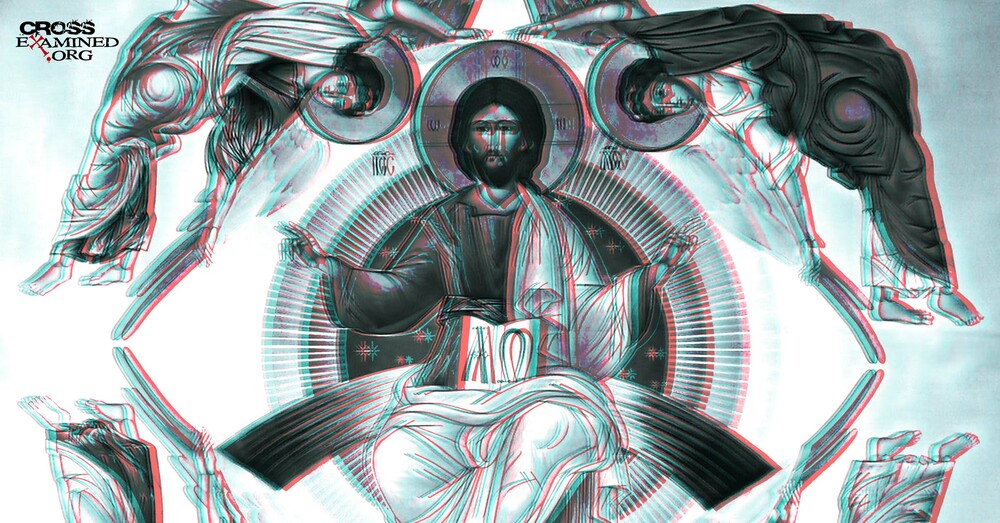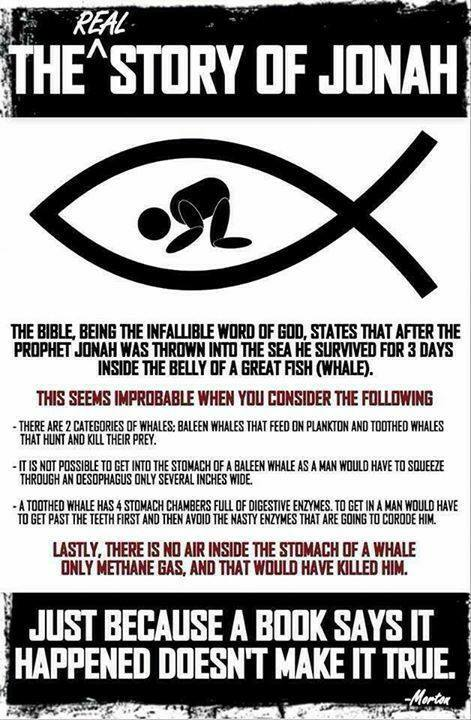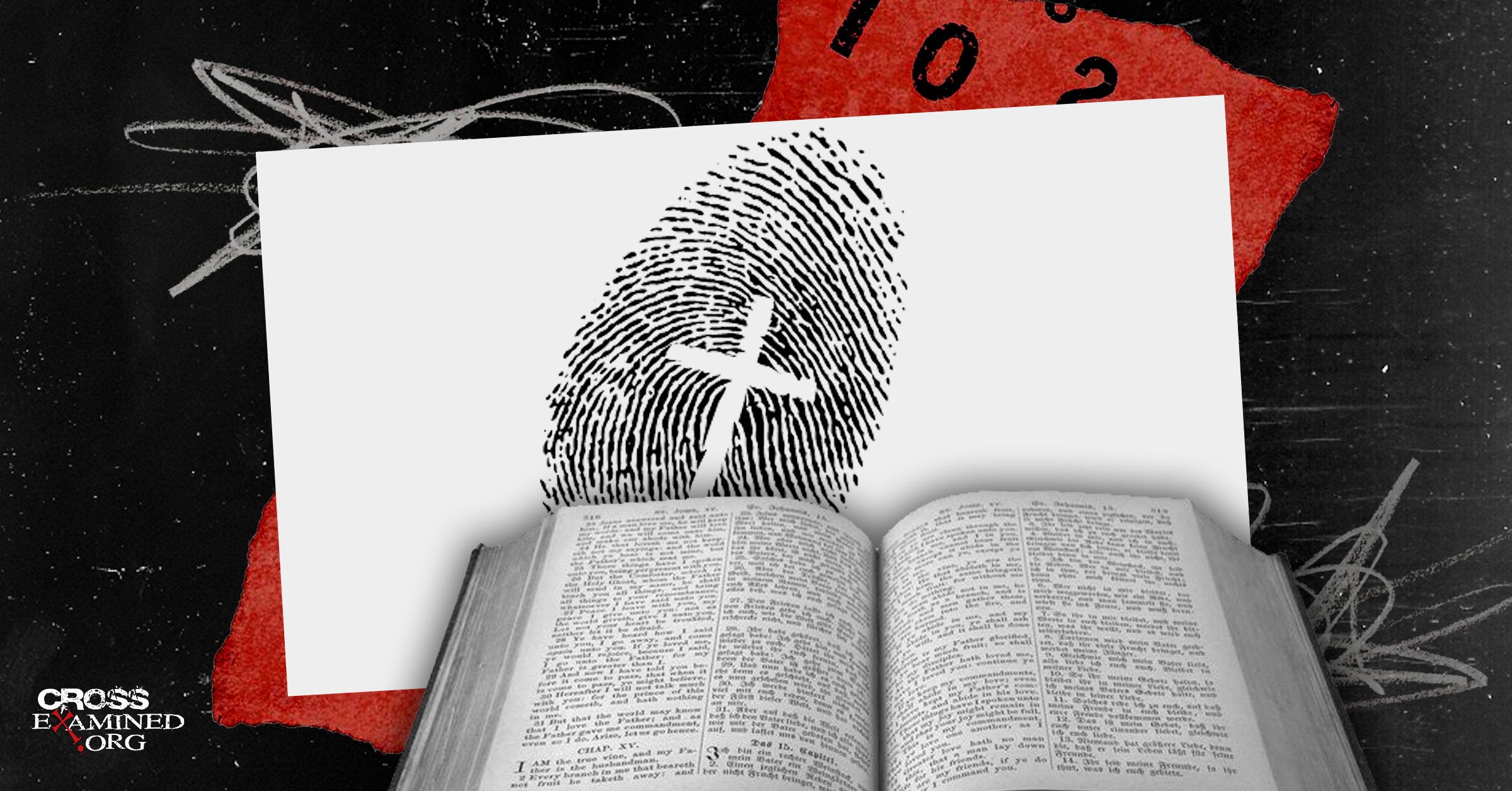In a previous article, I reviewed several arguments that are typically raised in support of the historicity of Jesus but, upon closer inspection, turn out to be of extremely limited evidential value. In this article, I will discuss an approach to arguing from extrabiblical sources that I consider to be much more robust. Whereas in the previous article, I critiqued appeals to direct testimony to the historicity of Jesus (which, at best, only attest to the broad outlines of the gospel story), in this article I will consider incidental allusions in the gospels that are indirectly and undesignedly confirmed by extrabiblical secular sources.
The data surveyed in the ensuing discussion are of varying evidential weights, though all are (in my assessment) significantly more probable on the hypothesis of historical reportage than on its falsehood. The case for the reliability of the gospels must also be recognized as a cumulative one, and one should not expect to be able to rest the entire case on any one of these examples. When the numerous lines of external and internal evidences bearing on the gospel accounts are considered together, one has, in my view, an extremely powerful argument for the substantial trustworthiness of the gospels – that is to say, that the gospel authors are shown to be close up to the facts, well informed, and habitually reliable. This is epistemically relevant to developing a case for the resurrection and in turn, Christianity, since, if the gospels can indeed be shown to be grounded in credible eyewitness testimony, then one has to take seriously the purported nature and variety of the post-resurrection encounters with the risen Jesus as coming from the original apostolic eyewitnesses. Having established the original apostolic claims concerning Jesus’ resurrection, we can then attempt to adjudicate whether these claims are best explained by the apostles attempting to deceive their audiences; by them being honestly mistaken, or by Jesus having risen from the dead.
One may object to the style of argument advanced here on the grounds that an individual living in first-century Palestine would presumably be expected to know these facts, or at the very least could have looked them up. However, of particular interest to our purposes here are difficult facts that the authors get right – that is to say, the evangelists betray knowledge (often very casually and incidentally) of specialized information that would have been hard to have access to unless they were close up both temporally and geographically to the events of which they wrote. I am not talking here of facts that would have been widely known and easily accessible, such as who was the Roman emperor of the time. In a world without the internet and easy access to information, writing about historical events that transpired decades before one’s time was a minefield, especially after the events of 70 A.D., when the city of Jerusalem and the temple were destroyed by the Romans. The numerous points of connection between the gospel history and that written of in secular sources, therefore, provide an important source of evidence for the credibility of the evangelists.
This article will discuss only incidental corroborations of the gospel accounts and will not touch upon the book of Acts, though of course evidence bearing on the reliability of Acts also bears indirectly on the credibility of the gospels since it reflects favorably upon the historical meticulousness of Luke, who authored Acts as well as the third gospel. The historical reliability of Acts will be the subject of a subsequent article (and I have also covered some examples in previous articles, for example here and here). I will also not in this essay offer an extensive discussion of historical objections to the gospels (of which there are many, some of which have been addressed previously on this site) but will instead focus solely on the positive case for the gospel history. However, a few historical objections will be considered that, upon closer inspection, turn out to provide positive evidence for the reliability of the gospels. This short essay is also not intended to provide an exhaustive list of extra-biblical evidences but will catalogue several key examples of external confirmation of the gospel accounts, with a view towards whetting the reader’s appetite for further study of this fascinating topic. For further reading, I recommend starting with part two, chapter six of William Paley’s A View of the Evidence of Christianity, to whom I owe many of the examples discussed in this essay.[1]
Joseph and Archelaus
The gospel of Matthew gives an account of the flight of Jesus and his family to Egypt to escape from Herod the Great’s attempt to kill Jesus by having all infants less than two years of age in the region of Bethlehem put to death (Matt 2:13-18). Matthew 2:19-22 picks up the story of Jesus’ family commencing their return from Egypt following the death of Herod the Great.
19 But when Herod died, behold, an angel of the Lord appeared in a dream to Joseph in Egypt, 20 saying, “Rise, take the child and his mother and go to the land of Israel, for those who sought the child’s life are dead.” 21 And he rose and took the child and his mother and went to the land of Israel. 22 But when he heard that Archelaus was reigning over Judea in place of his father Herod, he was afraid to go there, and being warned in a dream he withdrew to the district of Galilee.
Since Joseph received news that Herod the Great had passed away, one might have expected him to surmise that Herod the Great’s eldest son, Archelaus, would succeed him to the throne. However, in verse 22, we read that Joseph “heard that Archelaus was reigning over Judea in place of his father Herod,” and consequently “withdrew to the district of Galilee.” The reader, then, may wonder why news of Archelaus’ reign in Judea caused Joseph to revise his plans and travel towards Galilee instead. The Jewish historian Flavius Josephus gives us a clue. He tells us that, “he [Herod the Great] appointed Antipas, to whom he had before left the kingdom, to be tetrarch of Galilee and Berea, and granted the kingdom to Archelaus,” (Antiquities 17.188).[2] Josephus also writes elsewhere that Caesar Augustus, respecting Herod’s will (Wars of the Jews 2.93–96)[3],
“…gave the one half of Herod’s kingdom to Archelaus, by the name of Ethnarch, and promised to make him king also afterward, if he rendered himself worthy of that dignity; but as to the other half, he divided it into two tetrarchies, and gave them to two other sons of Herod, the one of them to Philip, and the other to that Antipas who contested the kingdom with Archelaus. Under this last was Perea and Galilee, with a revenue of two hundred talents: but Batanea, and Trachonitis, and Auranitis, and certain parts of Zeno’s house about Jamnia, with a revenue of a hundred talents, were made subject to Philip; (96) while Idumea, and all Judea, and Samaria, were parts of the ethnarchy of Archelaus, although Samaria was eased of one quarter of its taxes, out of regard to their not having revolted with the rest of the nation.”
Thus, we learn from Josephus that, following the death of Herod the Great, Herod’s territory was divided among three of his sons, with Herod’s eldest son Archelaus reigning in Judea; Herod Antipas becoming tetrarch of in Galilee and Peraea; and Philip becoming tetrarch of territories north and east of the Jordan. This, then, provides some historical background to Joseph’s decision to avoid Archelaus by going to Galilee instead of Judea. We still, however, at this point lack an explanation for why Joseph learning that Archelaus reigning in Judea prompted his change of course.
Josephus elsewhere reports that “There was one Judas, the son of Saripheus, and Matthias, the son of Margalothus,” who, “when they found that the king’s distemper was incurable, excited the young men that they would pull down all those works which the king had erected contrary to the law of their fathers, and thereby obtain the rewards which the law will confer on them for such actions of piety…for the king had erected over the great gate of the temple a large golden eagle, of great value, and had dedicated it to the temple,” (Antiquities 17.6.2).[4] Perceiving that the erection of a golden eagle in the temple violated the second commandment which prohibits graven images, these men therefore “persuaded [their scholars] to pull down the golden eagle; alleging, that although they should incur any danger which might bring them to their deaths, the virtue of the action now proposed to them would appear much more advantageous to them than the pleasures of life; since they would die for the preservation and observation of the law of their fathers; since they would also acquire an everlasting fame and commendation; since they would be both commended by the present generation, and leave an example of life that would never be forgotten to posterity…” (Antiquities 17.6.2).[5] Herod’s response was to burn those who had caused this sedition alive (Antiquities 17.6.4). This was among the last acts of Herod the Great before his death in 4 B.C. (Antiquities 17.8).
Josephus tells us that, following Herod the Great’s death and the succession of Archelaus in Judea, “some of the Jews got together, out of a desire of innovation. They lamented Matthias, and those that were slain with him by Herod, who had not any respect paid them by a funeral mourning, out of the fear men were in of that man; they were those who had been condemned for pulling down the golden eagle. The people made a great clamor and lamentation hereupon, and cast out some reproaches against the king also, as if that tended to alleviate the miseries of the deceased,” (Antiquities 17.9.1).[6] These individuals, Josephus informs us, “assembled together” and petitioned Archelaus to enact revenge against “those who had been honored by Herod; and that, in the first and principal place, he would deprive that high priest whom Herod had made…” (Antiquities 17.9.1).[7] However, Archelaus was “mightily offended at their importunity,” (Antiquities 17.9.1).[8] Josephus tells us of Archelaus’ response (Antiquities 17.9.1)[9]:
“However, he sent the general of his forces to use persuasions, and to tell them that the death which was inflicted on their friends, was according to the law; and to represent to them, that their petitions about these things were carried to a great height of injury to him; that the time was not now proper for such petitions, but required their unanimity until such time as he should be established in the government by the consent of Caesar, and should then be come back to them; for that he would then consult with them in common concerning the purport of their petitions; but that they ought at present to be quiet, lest they should seem seditious persons.”
Josephus goes on to tell us what happened as the next Passover festival rolled around, and there was an influx of Jewish pilgrims into Judea for the feast of Passover (Antiquities 17.9.3)[10]:
“Now, upon the approach of that feast of unleavened bread which the law of their fathers had appointed for the Jews at this time, which feast is called the Passover, and is a memorial of their deliverance out of Egypt…the seditious lamented Judas and Matthias, those teachers of the laws, and kept together in the temple, and had plenty of food, because these seditious persons were not ashamed to get it. And as Archelaus was afraid lest some terrible thing should spring up by means of these men’s madness, he sent a regiment of armed men, and with them a captain of a thousand, to suppress the violent efforts of the seditious, before the whole multitude should be infected with the like madness; and gave them this charge, that if they found any much more openly seditious than others, and more busy in tumultuous practices, they should bring them to him. But those that were seditious on account of those teachers of the law, irritated the people by the noise and clamors they used to encourage the people in their designs; so they made an assault upon the soldiers, and came up to them, and stoned the greatest part of them, although some of them ran away wounded, and their captain among them; and when they had thus done, they returned to the sacrifices which were already in their hands.”
Thus, this Jewish mob, who protested the death of Mathias and Judas (who had previously been executed for their part in removing the image of the eagle from the Jewish temple) stoned the soldiers who had been sent by Archelaus to prevent an uprising. Josephus tells us what happened next (Antiquities 17.9.3)[11]:
“Now Archelaus thought there was no way to preserve the entire government, but by cutting off those who made this attempt upon it; so he sent out the whole army upon them, and sent the horsemen to prevent those that had their tents without the temple, from assisting those that were within the temple, and to kill such as ran away from the footmen when they thought themselves out of danger; which horsemen slew three thousand men, while the rest went to the neighboring mountains. Then did Archelaus order proclamation to be made to them all, that they should retire to their own homes; so they went away, and left the festival, out of fear of somewhat worse which would follow, although they had been so bold by reason of their want of instruction.”
Thus, Archelaus’ response was to send his entire army upon the Jewish temple. He surrounded the temple with the horsemen (to prevent anyone from leaving or entering the temple) and had his men massacre three thousand Jews inside the temple. Given that these events unfolded around the time of Passover, it would have been a particularly busy time inside the temple. Following the massacre, Archelaus made a proclamation that Passover was cancelled and that the Jewish pilgrims should return to their hometowns from whence they came. It is not difficult to imagine Mary, Joseph, and Jesus making their way back north from Egypt right around this time, encountering this mass of distraught and fleeing pilgrims coming out of Judea, hearing what had just happened, and deciding to change course and go to Galilee instead, where Archelaus’ younger brother, Herod Antipas, was reigning instead.
It may be observed that Matthew does not give the backstory to Joseph’s change in course. Indeed, Archelaus is mentioned nowhere else in the Bible. Josephus’ incidental and undesigned illumination of the text, therefore, is more probable given that the event Matthew describes is grounded in truth rather than falsehood. This is made all the more the case by the chronological markers (especially the reference to Herod’s death in both accounts) which place these events as happening around the same time as the return of Joseph and his family from Egypt.
Another interesting, though somewhat weaker, point is that Matthew states that Ἀρχέλαος βασιλεύει τῆς Ἰουδαίας (literally, “Archelaus was kinging in Judea”). In concurrence with Matthew, Josephus informs us that His claim to the throne had not been certified by Caesar, and in fact, one of the complaints against Archelaus was that he had already taken the kingship over to himself before it had been formally ratified by Caesar: “Now, Antipater, Salome’s son, a very subtle orator, and a bitter enemy to Archelaus, spake first to this purpose:—That it was ridiculous in Archelaus to plead now to have the kingdom given him, since he had, in reality, taken already the power over it to himself, before Caesar had granted it to him,” (Antiquities 17.9.5).[12] Herod the Great, by contrast, is referred to as “Herod the king” (Mt 2:1,3, c.f. Lk 1:5), which is attested by first-century coins that bear the inscription, ΗΡΩ∆ΟΥ ΒΑΣΙΛΕΩΣ, that is, “King Herod.” In fact, there was never subsequently a formally ratified king at Jerusalem, except during the last three years of the life of Herod Agrippa I (Antiquities 18.6.10 and 19.5.1). This comports with Acts 12:1, which refers to Herod [Agrippa I] the king.”
When Did Jesus Begin His Public Ministry?
John 2:18-20 recounts a dialogue between Jesus and some Jews following the first cleansing of the temple, which occurred towards the beginning of Jesus’ public ministry:
18 So the Jews said to him, “What sign do you show us for doing these things?” 19 Jesus answered them, “Destroy this temple, and in three days I will raise it up.” 20 The Jews then said, “It has taken forty-six years to build this temple, and will you raise it up in three days?” 21 But he was speaking about the temple of his body. 22 When therefore he was raised from the dead, his disciples remembered that he had said this, and they believed the Scripture and the word that Jesus had spoken.
The veracity of the saying of Jesus in verse 19 is supported by an undesigned co-incidence, since Mark 14:57-58, describing the scene where Jesus is on trial before Caiaphas the high priest, notes,
57 And some stood up and bore false witness against him, saying, 58 “We heard him say, ‘I will destroy this temple that is made with hands, and in three days I will build another, not made with hands.’”
Mark 15:29-30 also reports that onlookers of Jesus’ death on the cross shouted out, “Aha! You who would destroy the temple and rebuild it in three days, save yourself, and come down from the cross!” (c.f. Mt 27:40). It is noteworthy that Jesus never said anything about destroying a manmade temple and rebuilding it in three days but not by human hands (as per Mk 14:57-58, c.f. Mt 26:61). Moreover, though both Mark and Matthew make reference to this accusation, neither gives a pretext of the saying, or attempts to clarify Jesus’ original words. It does not, however, appear to be a saying that has been invented out of whole cloth, but is more likely a garbled version of something Jesus in fact said (especially in view of the allusion to three days, often associated with Jesus’ predictions concerning His resurrection). In John 2:19 (quoted above), however, John provides us with the original statement of Jesus, though he does not report the later misrepresentation of Jesus’ words, nor its use as an accusation. Matthew and Mark, on the other hand, report the misrepresentations of Jesus’ words and its use as an accusation, but do not give us the original saying. Thus, neither account appears to independent, neither being copied from the other. This undesigned co-incidence supports the historicity of these accounts.
There is, however, also a way of corroborating this account using extrabiblical sources. Take note of the date given by the Jews – “it has taken forty-six years to build this temple…” We can thus discern the approximate date at which this dialogue must have taken place, since Flavius Josephus helpfully tells us when Herod the Great began to rebuild the temple. It was in the 18th year of his reign, which landed in approximately 19 B.C. (Antiquities 15.11.1). Forty-six years on from 19 B.C. lands us in 28 A.D. Now, according to Luke 3:1, when did Jesus commence His public ministry? It was in the fifteenth year of the reign of Tiberius Caesar. Augustus Caesar died in 14 A.D., but two years prior to that (the fall of 12 A.D.), according to the historian Suetonius, Augustus appointed Tiberius as co-emperor, in order to ensure a smooth transition of power. This is implied by the following quotation, which refers to Tiberius’ return to Rome following a stint in Germany for two years, between 10 and 12 A.D. (Suetonius, Tiberius 20-21)[13]:
“After two years he returned from Germany to the city, and celebrated the triumph which he had deferred, attended by his lieutenants, for whom he had procured the honour of triumphal ornaments. Before he turned to ascend the capitol, he alighted from his chariot, and knelt before his father, who sat by, to superintend the solemnity…A law having been not long after carried by the consuls for his being appointed a colleague with Augustus in the administration of the provinces, and in taking the census, when that was finished he went into Illyricum.”
This indicates that Tiberius was “appointed a colleague with Augustus in the administration of the provinces, and in taking the census” after Tiberius’ return from Germany, in 12 A.D. Thus, the fifteenth year of Tiberius lands us in 27 A.D., corresponding to Jesus’ baptism and ministry commencement. The cleansing of the temple would have taken place the following Passover (John 2:13), placing it in the spring of 28 A.D. Thus, by two independent methods, and using information drawn from John, Luke, Josephus, and Suetonius, we have been able to confirm the date on which Jesus cleansed the temple. This sort of co-incidence – in particular, the undesignedness with which the pieces dovetail, is best explained by the sources being rooted in truth.
Jesus’ Teachings on Divorce
In Mark 10:2-12, we read about Jesus’ teachings on the subject of divorce and remarriage:
2 And Pharisees came up and in order to test him asked, “Is it lawful for a man to divorce his wife?” 3 He answered them, “What did Moses command you?” 4 They said, “Moses allowed a man to write a certificate of divorce and to send her away.” 5 And Jesus said to them, “Because of your hardness of heart he wrote you this commandment. 6 But from the beginning of creation, ‘God made them male and female.’ 7 ‘Therefore a man shall leave his father and mother and hold fast to his wife, 8 and the two shall become one flesh.’ So they are no longer two but one flesh. 9 What therefore God has joined together, let not man separate.” 10 And in the house the disciples asked him again about this matter. 11 And he said to them, “Whoever divorces his wife and marries another commits adultery against her, 12 and if she divorces her husband and marries another, she commits adultery.”
This last statement in verses 11 and 12 has given rise to a popular objection to Mark’s account, namely, that although Jewish law made provision for a man to divorce his wife, it made no such provision for a woman to divorce her husband. Thus, it has been thought, this might betray the fact that the author of Mark was a gentile who here reveals his ignorance of Jewish law, or that our author has reworked Jesus’ teachings to make it more suitable for a Roman audience. John Donahue and Daniel Harrington, for instance, note that “This sentence is generally regarded as an addition to Jesus’ teaching that was made to address situations related to Roman legal practice whereby a woman could initiate divorce proceedings.”[14] Josephus, however, sheds some light on the significance of Jesus’ words in their original historical context. He writes that “Herodias took upon her to confound the laws of our country, and divorce herself from her husband [that is, Philip] while he was alive, and was married to Herod [Antipas], her husband’s brother by the father’s side; he was tetrarch of Galilee.”[15] This takes on a particular significance when we consider that Herod Antipas was tetrarch of Galilee, which was the very place where Jesus had just been teaching (Mk 9:30, 33). Though Mark 10:1 states that “he left there and went to the region of Judea and beyond the Jordan, and crowds gathered to him again,” the parallel account in Matthew 19:2 indicates that “large crowds followed him,” implying that he delivered this teaching to Galilean crowds. Furthermore, the verb ἔρχομαι in Mark 10:1 does not necessarily describe a completed action and verse 17 (“And as he was setting out on his journey…”) suggests that he had not yet arrived in Judea. In fact, Jesus did not even reach Jericho, which is on the outskirts of Judea, until verse 46. From these clues, it may be reasonably deduced that Jesus was still teaching the Galilean crowds, for whom a rebuke of Herod Antipas’ adulterous relationship with Herodias (and Herodias’ divorcing of her previous husband, Philip) was of particular relevance.
The surprising nature (given Jewish law) of Jesus’ teaching in Mark 10:11-12, coupled with the incidental way that Josephus illuminates the gospel account, supports the veracity of Mark’s narrative.
Why Was John the Baptist Imprisoned?
Mark 6:17-18 gives us the evangelist’s understanding of the motive behind Herod’s imprisonment of John the Baptist:
17 For it was Herod who had sent and seized John and bound him in prison for the sake of Herodias, his brother Philip’s wife, because he had married her. 18 For John had been saying to Herod, “It is not lawful for you to have your brother’s wife.”
Mark’s statement of Herod’s motivation in imprisoning John the Baptist contradicts the statement of Josephus, who wrote[16],
“Now, when [many] others came in crowds about him, for they were greatly moved [or pleased] by hearing his words, Herod, who feared lest the great influence John had over the people might put it into his power and inclination to raise a rebellion (for they seemed ready to do anything he should advise), thought it best, by putting him to death, to prevent any mischief he might cause, and not bring himself into difficulties, by sparing a man who might make him repent of it when it should be too late. Accordingly he was sent a prisoner, out of Herod’s suspicious temper, to Macherus, the castle I before mentioned, and was there put to death.”
According to the gospels, it was not just Herod’s suspicious temper or his fear of an uprising; it was because of John’s disapproval of Herod’s marriage to his brother’s wife, Herodias. Of course, these motivations are not incompatible and it may have been a combination of both. This does raise the interesting question, however, of how the evangelists should know what Herod Antipas’ motives were for having John imprisoned. A plausible answer to this is supplied by Luke 8:3, which indicates that one of Jesus’ female disciples, who had followed Him from Galilee, was “Joanna, the wife of Chuza, Herod’s household manager.” Thus, evidently, Jesus’ followers had family in the highest ranks of Herod Antipas’ employment.
There is also another interesting feature of this text from Josephus that is of evidential value. Herod Antipas’ previous wife, Phasaelis, whom Antipas had divorced, returned to her father, Aretas IV, king of the Nabateans. This resulted in a military conflict between Antipas and Aretas IV. Josephus explains (Antiquities 18.108–115) [17],
“About this time Aretas (the king of Arabia Petrea) and Herod had a quarrel, on the account following: Herod the tetrarch had married the daughter of Aretas, and had lived with her a great while; but when he was once at Rome, he lodged with Herod, who was his brother indeed, but not by the same mother; for this Herod was the son of the high priest Simon’s daughter. However, he fell in love with Herodias, this last Herod’s wife, who was the daughter of Aristobulus their brother, and the sister of Agrippa the Great. This man ventured to talk to her about a marriage between them; which address when she admitted, an agreement was made for her to change her habitation, and come to him as soon as he should return from Rome; one article of this marriage also was this, that he should divorce Aretas’s daughter. So Antipas, when he had made this agreement, sailed to Rome; but when he had done there the business he went about, and was returned again, his wife having discovered the agreement he had made with Herodias, and having learned it before he had notice of her knowledge of the whole design, she desired him to send her to Macherus, which is a place on the borders of the dominions of Aretas and Herod, without informing him of any of her intentions. Accordingly Herod sent her thither, as thinking his wife had not perceived anything; now she had sent a good while before to Macherus, which was subject to her father, and so all things necessary for her journey were made ready for her by the general of Aretas’s army and by that means she soon came into Arabia, under the conduct of the several generals, who carried her from one to another successively; and she soon came to her father, and told him of Herod’s intentions. So Aretas made this the first occasion of his enmity between him and Herod, who had also some quarrel with him about their limits at the country of Gamalitis. So they raised armies on both sides, and prepared for war, and sent their generals to fight instead of themselves; and, when they had joined battle, all Herod’s army was destroyed by the treachery of some fugitives, who, though they were of the tetrarchy of Philip, joined with Aretas’s army. So Herod wrote about these affairs to Tiberius; who, being very angry at the attempt made by Aretas, wrote to Vitellius, to make war upon him, and either to take him alive, and bring him to him in bonds, or to kill him, and send him his head. This was the charge that Tiberius gave to the president of Syria.”
Thus, Herod lost the war against Aretas IV. According to Josephus, many of the Jews blamed Herod’s defeat on the way in which Herod had treated John the Baptist (Antiquities 18.116–117)[18]:
“Now, some of the Jews thought that the destruction of Herod’s army came from God, and that very justly, as a punishment of what he did against John, that was called the Baptist; for Herod slew him, who was a good man, and commanded the Jews to exercise virtue, both as to righteousness towards one another, and piety towards God, and so to come to baptism; for that the washing [with water] would be acceptable to him, if they made use of it, not in order to the putting away [or the remission] of some sins [only], but for the purification of the body; supposing still that the soul was thoroughly purified beforehand by righteousness… Now the Jews had an opinion that the destruction of this army was sent as a punishment upon Herod, and a mark of God’s displeasure against him.”
The explanations that the Jews offered of Herod’s defeat at the hands of Aretas IV makes sense in view of the gospel account, which informs us that the reason why Herod had John the Baptist imprisoned was because “John had been saying to Herod, ‘It is not lawful for you to have your brother’s wife.’ And Herodias had a grudge against him and wanted to put him to death.” [19] John the Baptist was a strong critic of Herod Antipas’ adulterous relationship with Herodias, which had led to John’s imprisonment and ultimately to his execution. And it was Herod Antipas’ adulterous relationship with Herodias that led to the war between Herod Antipas and Aretas IV and ultimately to his defeat. Is it any wonder, then, that the Jews blamed the destruction of Herod’s armies on Herod’s treatment of John the Baptist? This undesigned co-incidence between Mark and Josephus again supports the veracity of Mark’s account.
The Execution of John the Baptist
Mark 6 recounts the story of the death of John the Baptist, when Herodias’ daughter, after dancing for Herod’s guests at a banquet, offered her whatever she wished. She requested the head of John the Baptist. According to Mark 6:27-28,
27 And immediately the king sent an executioner with orders to bring John’s head. He went and beheaded him in the prison 28 and brought his head on a platter and gave it to the girl, and the girl gave it to her mother.
The Greek word used for “executioner” in verse 27 is σπεκουλάτορα, rather than the more usual term for a civil executioner, which is δήμιος. The word σπεκουλάτορα is a rank of military officer, literally meaning “scout” or “courier” (English cognates include “spectate” and “spectacles”). This rank of officer also served as body guards of the Roman emperor. These officers occasionally acted as executioners (Seneca, de Ira 1.16), though this was not their distinctive office. The fact that Herod used a σπεκουλατωρ (rather than a δήμιος) to carry out the execution dovetails perfectly with Josephus’ account of the same event, according to which John the Baptist “was sent a prisoner, out of Herod’s suspicious temper, to Macherus, the castle I before mentioned, and was there put to death.” (Antiquities 18.119). [19] Thus, we learn that Herod Antipas was not during this time at his palace in Galilee, but rather was on a military campaign against his former father-in-law, Aretas IV, king of the Nabateans, and was therefore resident at his military fortress called Macherus. This illuminates why a military officer, rather than a civil executioner, was used for putting John the Baptist to death, and provides some supporting evidence in favor of historicity.
John the Baptist’s Baptizing on the Jordan River
In Luke 3:10-14, we read of various individuals who enquired of John the Baptist what they should do. According to verse 14,
14 Soldiers also asked him, “And we, what shall we do?” And he said to them, “Do not extort money from anyone by threats or by false accusation, and be content with your wages.”
The word translated “soldiers” in this verse is στρατευόμενοι, which is a present participle, literally translated “those soldiering” or “those being soldiers.” This is in fact the only instance of this form in the gospels and Acts out of 29 occurrences of the word στρατιώτης and its inflections. The use of the present participle in Luke 3:14 suggests that these soldiers are on active duty. How, though, does this comport with the fact that this period, near the beginning of Pilate’s decade-long term, is one of peace in Palestine? The only military conflict going on at this time was that between Herod Antipas and his former father-in-law, Aretas IV, king of the Nabateans. As already discussed, Josephus indicates that Herod Antipas had a fortress, called Macherus, located in Jordan twenty-five kilometers southeast of the mouth of the Jordan river, on the eastern side of the Dead Sea, “on the borders of the dominions of Aretas and Herod,” (Antiquities 18.111).[20] Antipas hired a mercenary army to carry on the war against Aretas. These soldiers, then, are on their way down to bolster the garrison at the fortress. Thus, the soldiers would naturally pass by where John the Baptist was baptizing on their way to shore up the garrison at Macherus. Again, the subtlety of this co-incidence tends to confirm the credibility of Luke’s account.
The Office of the High Priest
One curious feature of the gospel accounts is that the high priests are consistently spoken of in the plural number (ἀρχιερεῖς) when normally (as per the prescriptions of the Torah) there was only ever a single high priest. In agreement with the gospels, Josephus also speaks of the priests in the plural number (e.g. Wars of the Jews 2.322).
Luke 3:1 indicates that Jesus’ public ministry began “In the fifteenth year of the reign of Tiberius Caesar…during the high priesthood of Annas and Caiaphas.” A parallel passage in Josephus, which likewise speaks of two individuals occupying the office of high priest, can be found in Wars of the Jews 2.243: “but he [Quadratus] sent two others of those that were of the greatest power among men, and both Jonathan and Ananias, the high priests…”[21]
William Paley also observes that, though John does not mention that both Ananas and Caiaphas held the office of high priest, “That Annas was a person in an eminent station, and possessed an authority co-ordinate with, or next to, that of the high priest properly so called, may be inferred from Saint John’s Gospel, which, in the history of Christ’s crucifixion, relates [in 18:13] that ‘the soldiers led him away to Annas first.’ And this might be noticed as an example of undesigned coincidence in the two evangelists.”[22] The reason for taking Jesus to Annas first, according to John 18:13, was that “he was the father-in-law of Caiaphas, who was high priest that year,” but no mention is made of him also serving in the capacity of high priest.
Interestingly, Acts 4:6 refers to “Annas the high priest and Caiaphas and John and Alexander, and all who were of the high-priestly family,” thus referring only to Annas as high priest, even though he is listed alongside Caiaphas. In a similar vein, Josephus writes, “Joseph also, the son of Gorion, and Ananus the high priest, were chosen as governors of all affairs within the city,” (Wars of the Jews 2.563).[23] William Paley comments, “Yet Ananus, though here called the high priest Ananus, was not then in the office of the high priesthood. The truth is, there is an indeterminateness in the use of this title in the Gospel: sometimes it is applied exclusively to the person who held the office at the time; sometimes to one or two more, who probably shared with him some of the powers or functions of the office; and, sometimes, to such of the priests as were eminent by their station or character; and there is the very same indeterminateness in Josephus.”[24]
In Matthew 26:3, we read, “Then the chief priests and the elders of the people gathered in the palace of the high priest, whose name was Caiaphas.” Josephus attests to the fact that Caiaphas was high priest throughout the term of Pontius Pilate (and therefore at this time). Josephus writes (Antiquities 18.33)[25],
“He [Tiberius] was now the third emperor; and he sent Valerius Gratus to be procurator of Judea, and to succeed Annius Rufus. This man deprived Ananus of the high priesthood, and appointed Ismael, the son of Phabi, to be high priest. He also deprived him in a little time, and ordained Eleazar, the son of Ananus, who had been high priest before, to be high priest: which office, when he had held for a year, Gratus deprived him of it, and gave the high priesthood to Simon, the son of Camithus; and when he had possessed that dignity no longer than a year, Joseph Caiaphas was made his successor. When Gratus had done those things, he went back to Rome, after he had tarried in Judea eleven years, when Pontius Pilate came as his successor.”
From clues in Josephus and the gospels, it may reasonably be deduced that, though Ananus had been deposed from his office by Pilate’s predecessor, Valerius Gratus, the Jews nonetheless continued to recognize him as the rightful high priest, even while also recognizing the line of Roman-instituted high priests, the fourth of whom was Joseph Caiaphas. It is also noteworthy that Eleazar, the son of Ananias, and Simon, the son of Camithus, are both said to have held this office no longer than a year before the appointment of Caiaphas. This illuminates the statements in John 11:49, 11:51, and 18:13 that Caiaphas was “high priest that year,” when normally the office of the high priest was a life-long occupation. Note too that this is said of Caiaphas, but not of Ananus, which is consistent with the hypothesis, which I suggested above, that Ananus was recognized as the God-instituted high priest, even while also recognizing the series of Roman-instituted high priests.
Josephus also writes of the removal of Caiaphas from this office after Pilate’s term in office was over, noting that Lucius Vitellius the Elder, Legate of Syria “deprived Joseph, who was called Caiaphas, of the high priesthood, and appointed Jonathan, the son of Ananus, the former high priest, to succeed him,” (Antiquities 18.95).[26]
Do the Jews Wash Their Hands Before Eating?
In Mark 7:1-4, we read,
Now when the Pharisees gathered to him, with some of the scribes who had come from Jerusalem, 2 they saw that some of his disciples ate with hands that were defiled, that is, unwashed. 3 (For the Pharisees and all the Jews do not eat unless they wash their hands properly, holding to the tradition of the elders, 4 and when they come from the marketplace, they do not eat unless they wash. And there are many other traditions that they observe, such as the washing of cups and pots and copper vessels and dining couches.)
In his book, Jesus, Interrupted, Bart Ehrman asserts that “Mark 7:3 indicates that the Pharisees ‘and all the Jews’ washed their hands before eating, so as to observe ‘the tradition of the elders.’ This is not true: most Jews did not engage in this ritual.”[27] Ehrman has in mind here Exodus 30:18-21; 40:30-32 and Leviticus 20:1-16, in which the priests are called to observe hand washing practices, but the general populace is not. But did the Jews of Jesus’ time, who were heavily influenced by the practices of the Pharisees, engage in this ritual, even though it was not required of them in the written Law? To find out, we can look at some Jewish evidence. According to a letter addressed from an Alexandrian Jew by the name of Aristeas of Marmora (who lived in the second or third century B.C.) to his brother Philocrates, “And as is the custom of all the Jews, they washed their hands in the sea and prayed to God…” Another source is the Jewish philosopher Philo of Alexandria (20-50 A.D.), who writes that the law “does not look upon those who have even touched a dead body, which has met with a natural death, as pure and clean, until they have washed and purified themselves with sprinklings and ablutions” (The Special Laws 3.205).
Let’s consider some modern scholarly opinion. Susan Haber writes[28],
“The Centrality of impurity to Jewish life in the Second Temple period is supported by archaeological evidence. The discovery of mikvaot in such diverse places as Gamla, Sepphoris, Herodium and Massada suggests that in Palestine the removal of impurity was not a rite reserved only for approaching the sacred precincts of the Temple, but was common practice for Jews of all walks of life. The textual evidence suggests that the Jews of the Diaspora also purified themselves, if not through immersion, then by sprinkling, splashing or hand washing.”
To Ehrman’s credit, Ehrman has since corrected himself on this particular issue. Nonetheless, that Mark in facts gets this right (despite the apparent discrepancy with the Torah) suggests, once again, that he is well informed and close up to the facts.
Tyre to the Sea of Galilee by Way of Sidon
A curious statement is found in Mark 7:31 that “[Jesus] returned from the region of Tyre and went through Sidon to the Sea of Galilee, in the region of the Decapolis.” At first blush, this appears odd since Sidon is northeast of Tyre, while the Sea of Galilee is southeast of Tyre. Thus, it raises the question of why Jesus would travel north in order to go south. Some critical scholars argue that this reveals that “the evangelist was not directly acquainted with Palestine.”[29] It has even been suggested that “Mark wants to have Jesus move north, then east, and finally south to compass the whole of the southern Phoenician (Gentile) territory prior to his journey to Jerusalem in 8:22–10:52.”[30] However, such conclusions are unwarranted. Inspecting a topographical map reveals that there is in fact a mountain, Mount Meron, three-quarters of a mile high that lies directly between Tyre and the Sea of Galilee. There is a pass from Sidon that leads through the mountains to the Jordan river valley, which would supply fresh water for the journey to foot travelers to Galilee. Thus, far from revealing the evangelist’s ignorance of Palestinian geography, it in fact reveals his intimate acquaintance with it.
The Samaritans and Their Temple
John 4:1-45 recounts Jesus’ encounter with the woman of Samaria at Jacob’s well. The woman says to Jesus, “Sir, I perceive that you are a prophet. Our fathers worshiped on this mountain, but you say that in Jerusalem is the place where people ought to worship,” (Jn 4:19-20). In agreement with this, Josephus states that the Samaritans “assembled themselves together upon the mountain called Gerizzim, which is with them a holy mountain,” (War of the Jews 3.307)[31]. In verse 22, Jesus makes a particularly odd statement: “You worship what you do not know; we worship what we know, for salvation is from the Jews.” What is the subject of Jesus’ cryptic allusion in this verse? Once again, Josephus may shed some light. He writes of the Seleucid Tyrant, Antiochus Epiphanes’ march against Jerusalem, and the actions undertaken by the Samaritans to secure their own safety (Antiquities 12.5.5)[32]:
“When the Samaritans saw the Jews under these sufferings, they no longer confessed that they were of their kindred; nor that the temple on Mount Gerizzim belonged to Almighty God. This was according to their nature, as we have already shown. And they now said that they were a colony of Medes and Persians: and indeed they were a colony of theirs. So they sent ambassadors to Antiochus, and an epistle, whose contents are these:— ‘To king Antiochus the god, Epiphanes, a memorial from the Sidonians, who live at Shechem. Our forefathers, upon certain frequent plagues, and as following a certain ancient superstition, had a custom of observing that day which by the Jews is called the Sabbath. And when they had erected a temple at the mountain called Gerizzim, though without a name, they offered upon it the proper sacrifices. Now, upon the just treatment of these wicked Jews those that manage their affairs, supposing that we were of kin to them, and practiced as they do, make us liable to the same accusations, although we are originally Sidonians, as is evident from the public records. We therefore beseech thee, our benefactor and savior, to give order to Apollonius, the governor of this part of the country, and to Nicanor, the procurator of thy affairs, to give us no disturbance, nor to lay to our charge what the Jews are accused for, since we are aliens from their nation and from their customs; but let our temple which at present hath no name at all, be named the Temple of Jupiter Hellenius. If this were once done, we should be no longer disturbed, but should be more intent on our own occupation with quietness, and so bring in a greater revenue to thee.” When the Samaritans had petitioned for this, the king sent them back the following answer in an epistle:— ‘King Antiochus to Nicanor. The Sidonians, who live at Shechem, have sent me the memorial enclosed. When, therefore, we were advising with our friends about it, the messengers sent by them represented to us that they are no way concerned with accusations which belong to the Jews, but choose to live after the customs of the Greeks. Accordingly, we declare them free from such accusations, and order that, agreeable to their petition, their temple be named the Temple of Jupiter Hellenius.’ He also sent the like epistle to Apollonius, the governor of that part of the country, in the forty-sixth year, and the eighteenth day of the month Hecatombeon.”
Thus, in order to appease Antiochus and secure their safety, the people of Samaria offered to dedicate their temple to Jupiter, the Latin equivalent of the Greek God Zeus. This offer was accepted by Antiochus and he therefore passed through Samaria in peace. Is it any wonder, then, that Jesus said to the woman of Samaria, “You worship what you do not know”?
One may object to this example since these events transpired more than two centuries before the time of Jesus and it was likely that this was widely known at the time, presumably leading to ‘bad blood’ between the Jews and Samaritans as a result. Thus, one might argue, John’s readers would have been expected to immediately understand the reference. However, it seems that it would have been quite improbable that these events would have been widely known to John’s audience, which was comprised of both Jews and Gentiles. John’s gospel was probably composed later than the other gospels and likely after the fall of Jerusalem. The book was almost certainly written in Ephesus in Asia Minor, and it thus seems quite implausible that John would have faked this subtle reference on the assumption that his own audience would recognize it. For Jesus to assume that the woman at the well would understand the allusion would be more probable, from an historical perspective (rather like some sort of subtle cultural reference that someone might make to an audience now that would require people later to dig in order to understand).
Jesus Discloses His Identity
Another interesting feature of this episode is that the Samaritan woman is the one individual in the gospels (outside of his inner circle) to whom Jesus personally discloses His Messianic identity. In verses 25 and 26, we read, “The woman said to him, ‘I know that Messiah is coming (he who is called Christ). When he comes, he will tell us all things.’ Jesus said to her, ‘I who speak to you am he.’” Throughout the synoptic accounts, Jesus often sternly warns people not to publicly disclose His identity or speak publicly of His miracles (e.g. Mk 1:43-45; Mk 8:27-30). In scholarly circles, this is known as the “messianic secret.” We also see Jesus frequently seeking to avoid large crowds. Those features of Jesus’ behavior are illuminated by John 6:15, which immediately follows the account of the feeding of the five thousand, in which we read, “Perceiving then that they were about to come and take him by force to make him king, Jesus withdrew again to the mountain by himself.” Given the popular Messianic expectation of an individual who would overthrow the Roman occupiers and re-establish a Davidic reign, Jesus naturally feared that public disclosure of His Messianic identity would result in misunderstandings and attempts by the crowds to make Him King by force. Thus, John 6:15 explains the Messianic secret in the synoptics. But why does Jesus disclose His public identity to the Samaritan woman in John 4:26? And why does he not charge her to secrecy, as He does with so many others? Later Samaritan documents explain that their view of the Messiah (whom the Samaritans called the Taheb, or restorer) was different from that of the Jews, and was largely informed by Deuteronomy 18:15-18, which speaks of the Messiah as a prophet like Moses (the Samaritans only accepted the books of Moses as Scripture). Some evidence also indicates that the role of the Taheb included teaching. Jesus therefore had no reason to worry that the Samaritans would misunderstand His claim to be the Messiah, and expect Him to lead a military revolution against Rome.
No Friend of Caesar
In John 19:12, we read of the taunt of the Jewish crowd against Pontius Pilate, when Pilate had sought to release Jesus, against the will of the crowds:
12 From then on Pilate sought to release him, but the Jews cried out, “If you release this man, you are not Caesar’s friend. Everyone who makes himself a king opposes Caesar.”
The first century Jewish philosopher, Philo of Alexandria, gives an account of a previous episode, which may illuminate why this was a sore point for Pilate, in which the Jews had complained to Tiberius Caesar about certain shields that Pilate had had erected in Jerusalem, resulting in Tiberius having written a sharply worded letter to Pilate demanding that the shields be removed (Embassy 299–305)[33]:
“I can quote in addition one act showing a fine spirit. For though I experienced many ills when he was alive, truth is dear, and is held in honour by you. One of his lieutenants was Pilate, who was appointed to govern Judaea. He, not so much to honour Tiberius as to annoy the multitude, dedicated in Herod’s palace in the holy city some shields coated with gold. They had no image work traced on them nor anything else forbidden by the law apart from the barest inscription stating two facts, the name of the person who made the dedication and of him in whose honour it was made. But when the multitude understood the matter which had by now become a subject of common talk, having put at their head the king’s four sons, who in dignity and good fortune were not inferior to a king, and his other descendants and the persons of authority in their own body, they appealed to Pilate to redress the infringement of their traditions caused by the shields and not to disturb the customs which throughout all the preceding ages had been safeguarded without disturbance by kings and by emperors. When he, naturally inflexible, a blend of self-will and relentlessness, stubbornly refused they clamoured, ‘Do not arouse sedition, do not make war, do not destroy the peace; you do not honour the emperor by dishonouring ancient laws. Do not take Tiberius as your pretext for outraging the nation; he does not wish any of our customs to be overthrown. If you say that he does, produce yourself an order or a letter or something of the kind so that we may cease to pester you and having chosen our envoys may petition our lord.’ It was this final point which particularly exasperated him, for he feared that if they actually sent an embassy they would also expose the rest of his conduct as governor by stating in full the briberies, the insults, the robberies, the outrages and wanton injuries, the executions without trial constantly repeated, the ceaseless and supremely grievous cruelty. So with all his vindictiveness and furious temper, he was in a difficult position. He had not the courage to take down what had been dedicated nor did he wish to do anything which would please his subjects. At the same time he knew full well the constant policy of Tiberius in these matters. The magnates saw this and understanding that he had repented of his action but did not wish to appear penitent sent letters of very earnest supplication to Tiberius. When he had read them through what language he used about Pilate, what threats he made! The violence of his anger, though he was not easily roused to anger, it is needless to describe since the facts speak for themselves. For at once without even postponing it to the morrow he wrote to Pilate with a host of reproaches and rebukes for his audacious violation of precedent and bade him at once take down the shields and have them transferred from the capital to Caesarea on the coast surnamed Augusta after your great-grandfather, to be set up in the temple of Augustus, and so they were. So both objects were safeguarded, the honour paid to the emperor and the policy observed from of old in dealing with the city.”
Philo’s account thus provides a backstory that illuminates why the taunt of the Jewish crowd, “If you release this man, you are not Caesar’s friend,” was such a sore point for Pilate and why it led to him acquiescing to the crowd’s demands that Jesus be crucified.
The Test of Personal Names
What can the naming patterns of the gospels tell us about their historical credibility? In his ground breaking work, Jesus and the Eyewitnesses, British New Testament Richard Bauckham lays out an array of evidences for the trustworthiness of the gospels.[34] Though I do not endorse all of the arguments of the book, it is a scholarly treatise of the evidence for the gospels as eyewitness testimony that is well worth reading. Among the arguments adduced in this volume is the test of personal names, which is covered in chapters three and four of the book. Bauckham’s analysis is based upon a lexicon compiled by Tal Ilan and containing three thousand Jewish names derived from ossuaries and documentary sources.[35] Bauckham explains that “The chronological period it covers begins at the Hellenistic conquest of Palestine and concludes at the end of the Mishnaic period. Thus its sources include the works of Josephus, the New Testament, the texts from the Judean desert and from Masada, ossuary inscriptions from Jerusalem, and the earliest (tannaitic) rabbinic sources.”[36] One may complain that the range of the lexicon’s coverage is from 330 B.C. to 200 A.D. is too broad. Bauckham responds to this concern by noting that “this possible disadvantage for the New Testament scholar in Ilan’s collection of data is offset by the facts that in many respects the practices of name-giving seem to have remained fairly constant over this period and also, importantly, that a large proportion of the data actually comes from the first century CE and early second century (to 135 CE), just because the sources for this shorter period are much more plentiful than for other parts of the whole period.”[37] Bauckham further remarks, “It may come as a surprise to many readers that we know the names of as many as three thousand Palestinian Jews who lived during the five centuries covered by Ilan’s Lexicon. In most cases we know at least a little more about these persons, even if it is only their relationship to another named person. This material obviously provides a very rich resource for the history of Jewish Palestine and, among other specific parts of that history, the history of the beginnings of Christianity. The availability of the information in the comprehensive and systematic form of the Lexicon now makes the use of this resource much more possible and accurate.”[38]
Bauckham argues that there is a remarkable correlation between the frequency of names found in the Gospels and Acts and the frequency of names found in writings outside of the New Testament. This argument is also developed by Peter J. Williams, of Tyndale House in Cambridge, in his popular book, Can We Trust the Gospels?[39] The top 2 men’s names (Simon and Joseph) in first century Palestine outside the New Testament have a frequency of 15.6%. The frequency of those two names in the gospels and Acts is 18.2%. Taking a slightly bigger data set, the frequency of the top nine men’s names outside the New Testament is 41.5%; whereas the frequency in the Gospels and Acts is 40.3%. The frequency of the top two women’s names (Mary and Salome) outside the New Testament is 28.6%; the frequency in the Gospels and Acts is 38.9%. The frequency of the top nine women’s names outside the New Testament is 49.7%; and 61.1% in the Gospels and Acts.
The top 6 male Jewish names in first century Palestine are:
1) Simon/Simeon
2) Joseph/Joses
3) Lazarus/Eleazar
4) Judas/Judah
5) John/Yohanan
6) Jesus/Joshua
The frequency of New Testament individuals with those names, according to Bauckham, is 8, 6, 1, 5, 5 and 2 respectively, which he claims represents a correlation between the naming frequencies in the New Testament and those external to it.[40] Bauckham also observes that the rankings of names in Palestine does not correspond with the rankings of those names in other regions. For example, the rankings of male Jewish names in Egypt during that same period are:
1) Eleazar (ranked 3rd in Palestine)
2) Sabbataius (ranked 68= in Palestine)
3) Joseph (ranked 2 in Palestine)
4=) Dositheus (ranked 16 in Palestine)
4=) Pappus (ranked 39= in Palestine)
6=) Ptolemaius (ranked 50= in Palestine)
6=) Samuel (ranked 23 in Palestine)
Bauckham concludes[41],
“The evidence in this chapter shows that the relative frequency of the various personal names in the Gospels corresponds well to the relative frequency in the full database of three thousand individual instances of names in the Palestinian Jewish sources of the period. This correspondence is very unlikely to have resulted from addition of names to the traditions, even within Palestinian Jewish Christianity, and could not possibly have resulted from the addition of names to the traditions outside Jewish Palestine, since the pattern of Jewish name usage in the Diaspora was very different.”
I am afraid that, in my assessment, Bauckham overstates this part of his argument. My main concern is that too few names are used in the gospels to make the results of a statistical analysis meaningful. Furthermore, there are important anomalies that Bauckham fails to acknowledge or account for. For example, according to the data cited by Bauckham, the name Jesus is the sixth most popular Palestinian male Jewish name. However, besides Jesus of Nazareth, no other Jesus is named in the gospels. In Acts 13:6, there is a Jewish false prophet, named Bar-Jesus (“son of Jesus”) but he is not in Palestine but on the island of Cyprus. Moreover, the name Lazarus is ranked #3 in Palestine but there is only a single individual by that name in the gospels and Acts (I am not counting the individual by that name who appears only in a parable). Similarly, Matthew is ranked #9 in Palestine but there are only two individuals by that name in the gospels and Acts. On the other hand, James is the eleventh most popular Jewish male name in Palestine but there are five individuals by that name in the gospels and Acts (more than for higher ranking names such as Matthew, Ananias, Jesus, or Lazarus).
Thus, in view of the foregoing considerations, the argument, as Bauckham offers it, I believe to be overstated. I would, however, argue that the very fact that we have such a small sample in the gospels and Acts entails that the exact relative proportions with which these names appear do not have to be precise. If one finds that the Gospels have none of those distinctively Egyptian names (such as Sabbateus) and that the large majority of their names come from the most frequent names in Palestine at the time, for such a small sample, that does carry evidential force. This is all the more the case when one finds that, when the gospels mention several people by the same name (Simon and Mary being two notable examples), which were very common names in Palestine at that time.
Furthermore, a more promising argument, I think, lies in a related feature of the text, also discussed by Bauckham [42] and by Williams[43]. Consider the following excerpt from Matthew 10 (verses 2-4) where we are given the names of the twelve disciples. Where these names feature in the top eighty names, their ranking is given in brackets:
Simon (1), called Peter, and Andrew his brother, and James (11) the son of Zebedee, and John (5) his brother; Philip (61=) and Bartholomew (50=); Thomas and Matthew (9) the tax collector; James (11) the son of Alphaeus, and Thaddaeus (39=); Simon (1) the Cananaean, and Judas (4) Iscariot, who also betrayed him.
Notice that there is correlation between those names that have a high ranking and those names that are assigned a qualifier, a pattern that is sustained throughout the gospels (consistently in quoted speech, though not always in the narration after characters have already been introduced). The lower-ranked names do not have a qualifier. Thus, this correlation between the frequency of a name and the use of a disambiguation to distinguish them from other people bearing the same name reflects what we would expect if they were written by eyewitnesses with a close connection to the time and place of the events that they narrate. This is not a pattern that would have been at all easy for a forger to create.
Conclusion
To conclude, there is ample evidence from extrabiblical sources that the gospels and Acts were composed by individuals who were close up to the facts, well informed and habitually reliable. This is epistemically relevant to the resurrection of Jesus since, if the gospels and Acts do indeed go back to the earliest apostolic eyewitnesses, then we have strong reason to believe that the nature and variety of the post-resurrection encounters with the risen Jesus reflects the testimony of Jesus’ original followers. We may then evaluate those claims to determine whether they are best explained as a result of the claimant being honestly mistaken, deliberately deceptive or truthful and informed. Readers who are interested in further investigation of the claim of the resurrection may wish to check out my writing on this subject, which you can find here.
Footnotes
[1] William Paley and Edmund Paley, The Works of William Paley, vol. 2 (London; Oxford; Cambridge; Liverpool: Longman and Co.; T. Cadell; J. Richardson; Baldwin and Cradock; Hatchard and Son; J. G. & F. Rivington; Whittaker and Co.; Hamilton, Adams & Co.; Simpkin, Marshall, and Co.; Smith, Elder and Co.; E. Hodgson; B. Fellowes; R. Mackie; J. Templeman; H. Washbourne; Booker and Dolman; J. Parker; J. and J. J. Deighton; G. and J. Robinson, 1838).
[2] Flavius Josephus and William Whiston, The Works of Josephus: Complete and Unabridged (Peabody: Hendrickson, 1987), 463.
[3] Ibid., 603.
[4] Ibid., 461.
[5] Ibid.
[6] Ibid., 465.
[7] Ibid.
[8] Ibid.
[9] Ibid.
[10] Ibid., 465-466.
[11] Ibid., 466.
[12] Ibid.
[13] C. Suetonius Tranquillus, Suetonius: The Lives of the Twelve Caesars; An English Translation, Augmented with the Biographies of Contemporary Statesmen, Orators, Poets, and Other Associates, ed. Alexander Thomson (Medford, MA: Gebbie & Co., 1889).
[14] John R. Donahue and Daniel J. Harrington, The Gospel of Mark, ed. Daniel J. Harrington, vol. 2, Sacra Pagina Series (Collegeville, MN: The Liturgical Press, 2002), 295.
[15] Flavius Josephus and William Whiston, The Works of Josephus: Complete and Unabridged (Peabody: Hendrickson, 1987), 485.
[16] Ibid., 484.
[17] Ibid.
[18] Ibid.
[19] Ibid.
[20] Ibid.
[21] Ibid., 613.
[22] William Paley and Edmund Paley, The Works of William Paley, vol. 2 (London; Oxford; Cambridge; Liverpool: Longman and Co.; T. Cadell; J. Richardson; Baldwin and Cradock; Hatchard and Son; J. G. & F. Rivington; Whittaker and Co.; Hamilton, Adams & Co.; Simpkin, Marshall, and Co.; Smith, Elder and Co.; E. Hodgson; B. Fellowes; R. Mackie; J. Templeman; H. Washbourne; Booker and Dolman; J. Parker; J. and J. J. Deighton; G. and J. Robinson, 1838), 210.
[23] Flavius Josephus and William Whiston, The Works of Josephus: Complete and Unabridged (Peabody: Hendrickson, 1987), 633.
[24] William Paley and Edmund Paley, The Works of William Paley, vol. 2 (London; Oxford; Cambridge; Liverpool: Longman and Co.; T. Cadell; J. Richardson; Baldwin and Cradock; Hatchard and Son; J. G. & F. Rivington; Whittaker and Co.; Hamilton, Adams & Co.; Simpkin, Marshall, and Co.; Smith, Elder and Co.; E. Hodgson; B. Fellowes; R. Mackie; J. Templeman; H. Washbourne; Booker and Dolman; J. Parker; J. and J. J. Deighton; G. and J. Robinson, 1838), 210.
[25] Flavius Josephus and William Whiston, The Works of Josephus: Complete and Unabridged (Peabody: Hendrickson, 1987), 478.
[26] Ibid., 483.
[27] Bart D. Ehrman, Jesus, Interrupted: Revealing the Hidden Contradictions in the Bible (And Why We Don’t Know About Them). (New York: HarperCollins, 2009), 287.
[28] Susan Haber, “They Shall Purify Themselves”: Essays on Purity in Early Judaism (Society of Biblical Literature, 2008), 130-131.
[29] Dennis E. Nineham, The Gospel of St. Mark (Harmondsworth, Middlesex [England]; New York: Penguin Books, 1963), 40.
[30] John R. Donahue and Daniel J. Harrington, The Gospel of Mark, ed. Daniel J. Harrington, vol. 2, Sacra Pagina Series (Collegeville, MN: The Liturgical Press, 2002), 239.
[31] Flavius Josephus and William Whiston, The Works of Josephus: Complete and Unabridged (Peabody: Hendrickson, 1987), 653.
[32] Ibid., 324.
[33] Philo, Philo, trans. F. H. Colson, G. H. Whitaker, and J. W. Earp, vol. 10, The Loeb Classical Library (London; England; Cambridge, MA: William Heinemann Ltd; Harvard University Press, 1929–1962), 151–155.
[34] Richard Bauckham, Jesus and the Eyewitnesses: The Gospels as Eyewitness Testimony, Second Edition. (Grand Rapids, MI: William B. Eerdmans Publishing Company, 2017).
[35] Tal Ilan, Lexicon of Jewish Names in Late Antiquity: Palestine 330 Bce – 200 Ce (London: Coronet Books, 2002).
[36] Richard Bauckham, Jesus and the Eyewitnesses: The Gospels as Eyewitness Testimony, Second Edition. (Grand Rapids, MI: William B. Eerdmans Publishing Company, 2017), 68.
[37] Ibid.
[38] Ibid.
[39] Peter J. Williams, Can We Trust the Gospels? (Illinois: Crossway, 2018), 64-77.
[40] Richard Bauckham, Jesus, and the Eyewitnesses: The Gospels as Eyewitness Testimony, Second Edition. (Grand Rapids, MI: William B. Eerdmans Publishing Company, 2017), 85–88.
[41] Ibid., 84.
[42] Ibid., 78–84.
[43] Peter J. Williams, Can We Trust the Gospels? (Illinois: Crossway, 2018), 66-68.
Recommended resources related to the topic:
The New Testament: Too Embarrassing to Be False by Frank Turek (DVD, Mp3, and Mp4)
Why We Know the New Testament Writers Told the Truth by Frank Turek (DVD, Mp3 and Mp4)
Oh, Why Didn’t I Say That? Is the Bible Historically Reliable? by Dr. Frank Turek DVD, Mp4, Mp3 Download.
__________________________________________________________________________________________________________________________________________________
Dr. Jonathan McLatchie is a Christian writer, international speaker, and debater. He holds a Bachelor’s degree (with Honors) in forensic biology, a Masters’s (M.Res) degree in evolutionary biology, a second Master’s degree in medical and molecular bioscience, and a Ph.D. in evolutionary biology. Currently, he is an assistant professor of biology at Sattler College in Boston, Massachusetts. Dr. McLatchie is a contributor to various apologetics websites and is the founder of the Apologetics Academy (Apologetics-Academy.org), a ministry that seeks to equip and train Christians to persuasively defend the faith through regular online webinars, as well as assist Christians who are wrestling with doubts. Dr. McLatchie has participated in more than thirty moderated debates around the world with representatives of atheism, Islam, and other alternative worldview perspectives. He has spoken internationally in Europe, North America, and South Africa promoting an intelligent, reflective, and evidence-based Christian faith.
Original Blog Source: https://cutt.ly/LEXQYZJ
 I was first introduced to Dr. Emerson Eggerichs’ work about a decade ago when my wife and I were at the local Christian bookstore, and one of his books about communication in marriage was on sale. I picked it up and found that it was on target with what Scripture taught about male and female communication and what my wife and I had experienced in our own marriage. After reading his flagship book “Love and Respect: The Love She Desires Most; The Respect He Desperately Needs” and listening to the podcast he produced for a couple years, I (along with many others) realized that the communication principles he drew from Scripture rang true in all relationships, not just marriage.
I was first introduced to Dr. Emerson Eggerichs’ work about a decade ago when my wife and I were at the local Christian bookstore, and one of his books about communication in marriage was on sale. I picked it up and found that it was on target with what Scripture taught about male and female communication and what my wife and I had experienced in our own marriage. After reading his flagship book “Love and Respect: The Love She Desires Most; The Respect He Desperately Needs” and listening to the podcast he produced for a couple years, I (along with many others) realized that the communication principles he drew from Scripture rang true in all relationships, not just marriage.











